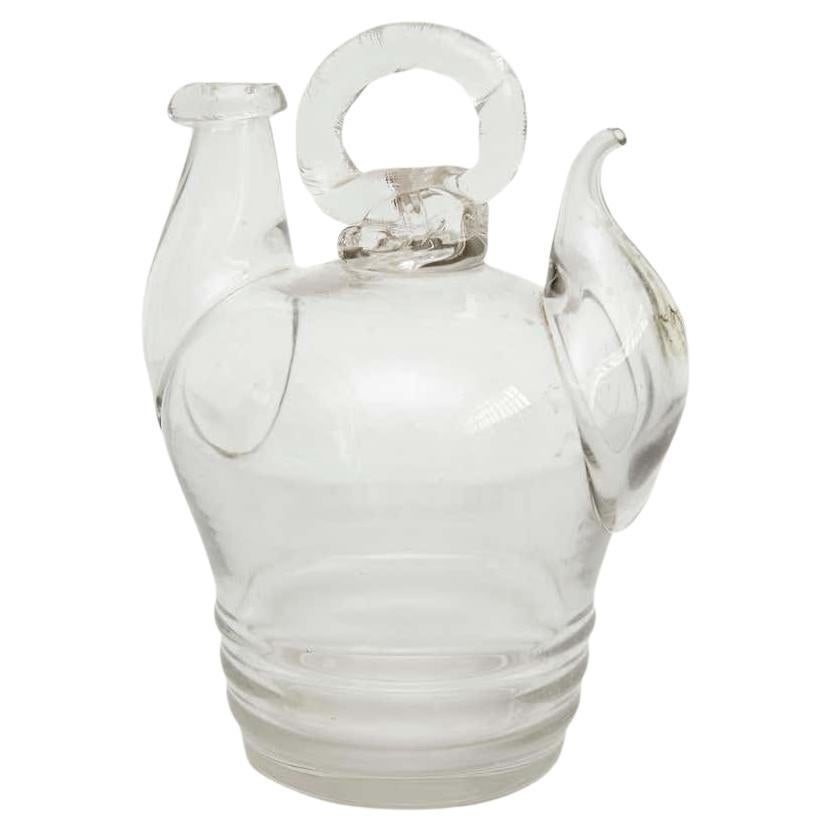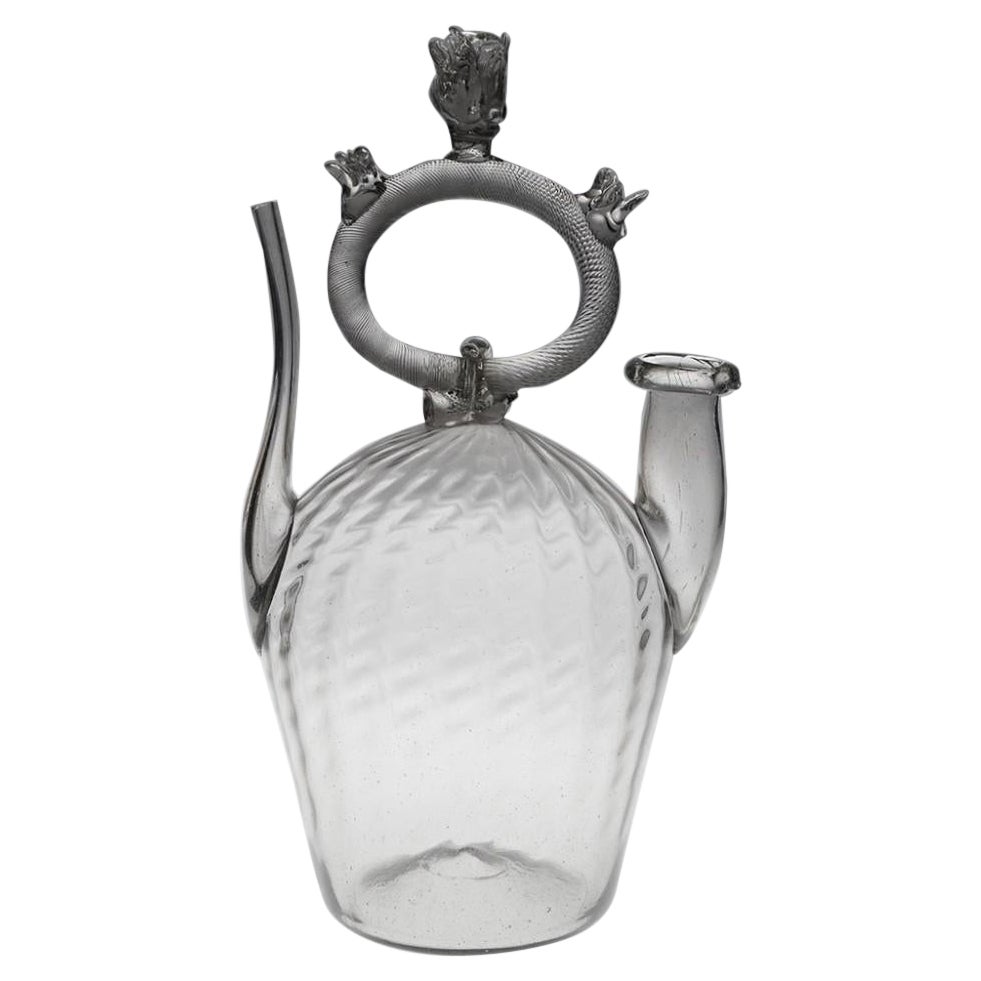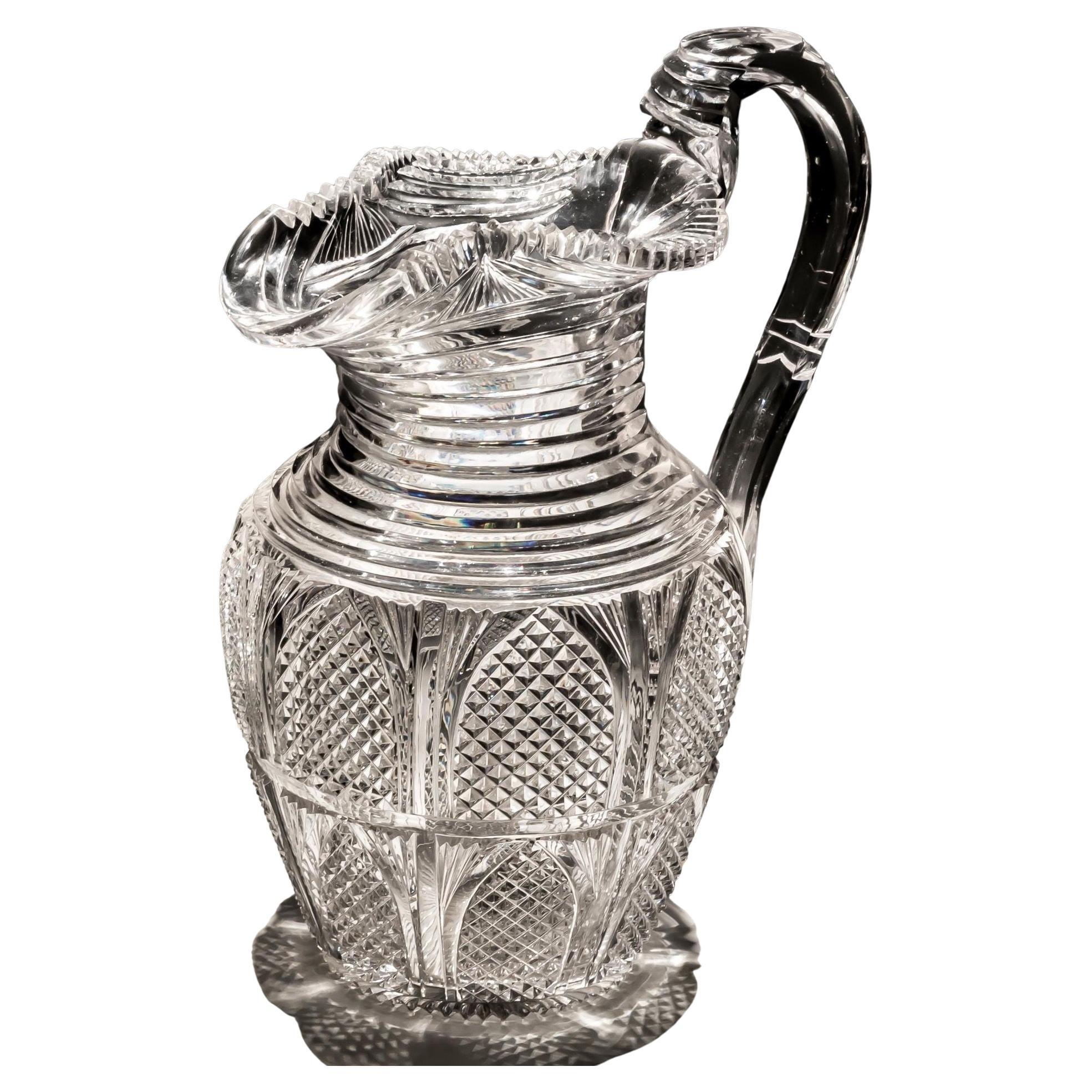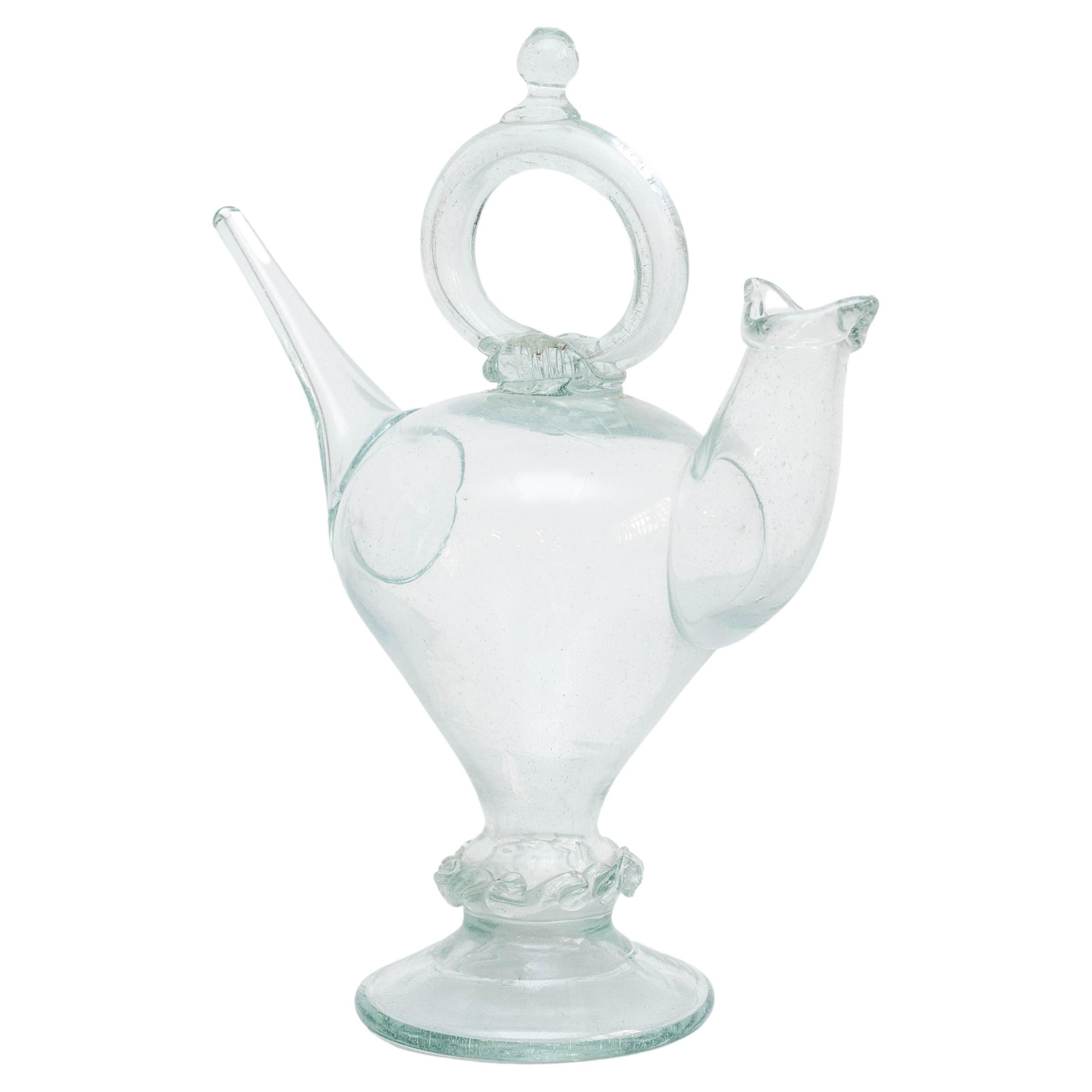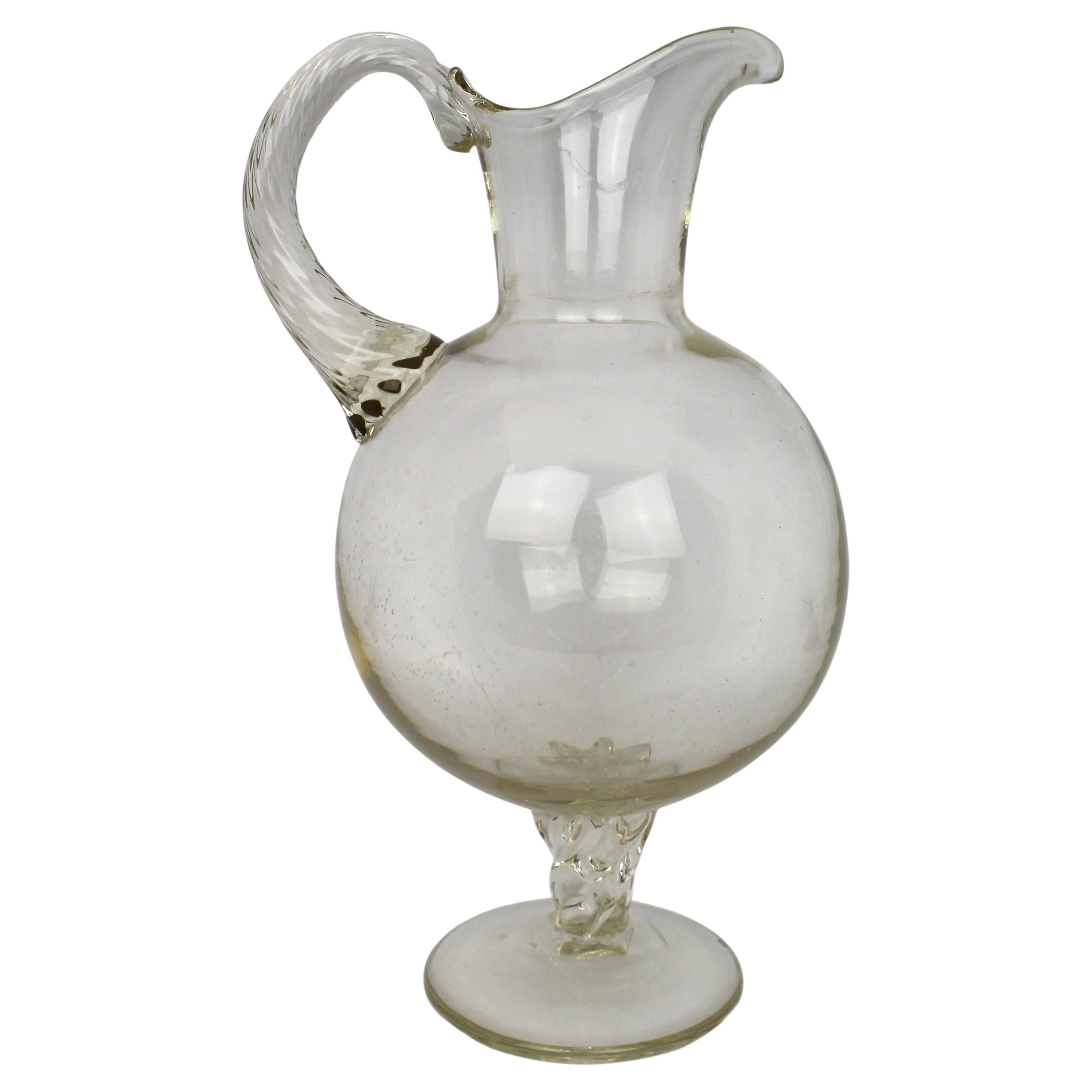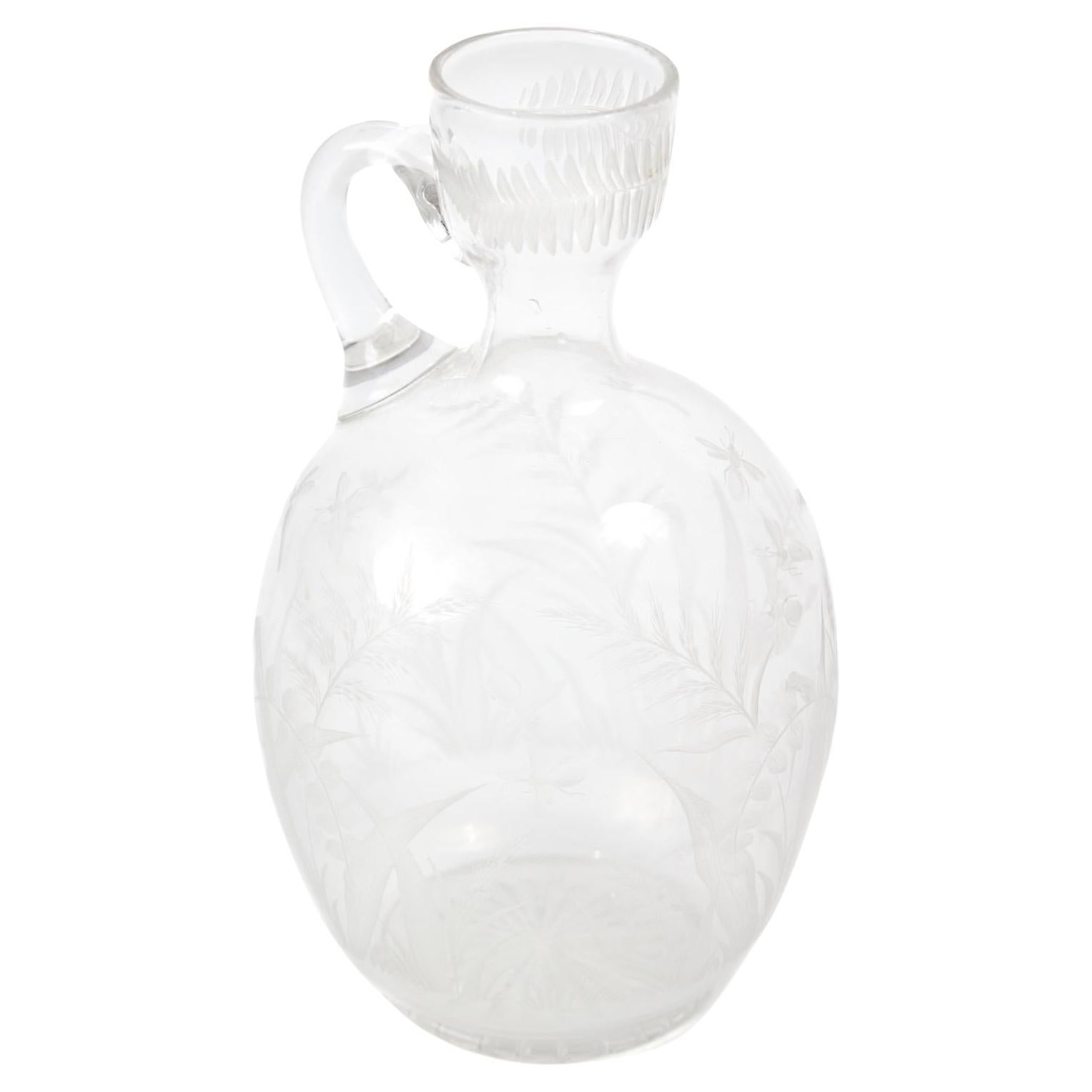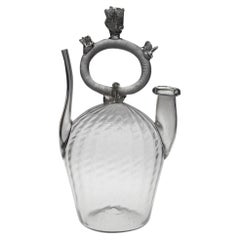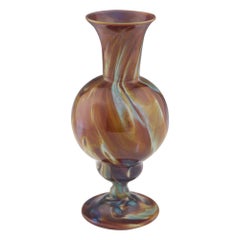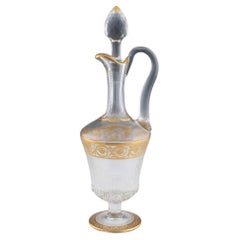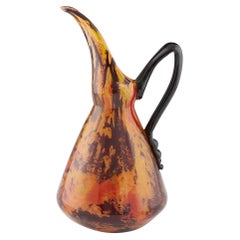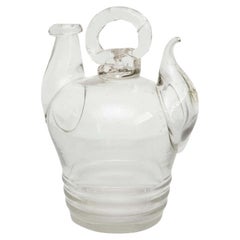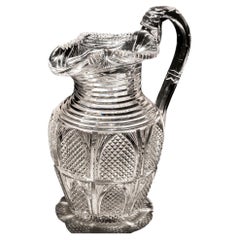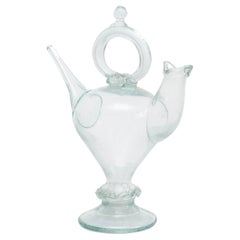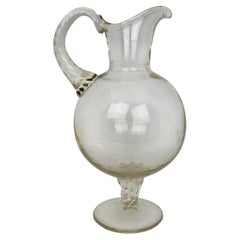Items Similar to Catalan or Spanish Càntir Water Jug - 18th century
Want more images or videos?
Request additional images or videos from the seller
1 of 8
Catalan or Spanish Càntir Water Jug - 18th century
$737.13
£535
€628.86
CA$1,020.01
A$1,124.53
CHF 588.32
MX$13,795.93
NOK 7,405.78
SEK 6,925.57
DKK 4,696.34
About the Item
Heading : Catalan or Spanish Càntir
Date : 18th century
Origin : Catalonia or Spain
Colour : Pale green
Type : Free-blown contiguous hollow body and foot, waisted to form rudimentary stem; two applied spouts at top, with base of missing ring handle showing evidence of blue trailing; body and spouts decorated with somewhat crudely applied white trailed latticino threads both internally and externally;
Glass Type : Lead-free
Size : 17.4 cm in height; 8.8 cm wide between extremities of two spouts; 5.8 cm diameter base
Condition : Seemingly intact other than the missing ring-handle which would once have been affixed to the top
Restoration : None
Weight : 106g
Notes : Larger ceramic or earthenware versions of these vessels were for utilitarian day to day use, whereas the glass versions such as this example were generally for display or ceremonial purposes - particularly christenings for the latter; we are advised that subtle differences in the shape of the aperture on the wider of the two spouts were pertinent to the gender of the child that was being welcomed in to the church.
- Dimensions:Height: 6.86 in (17.4 cm)Diameter: 3.47 in (8.8 cm)
- Materials and Techniques:
- Place of Origin:
- Period:1750-1759
- Date of Manufacture:1750
- Condition:Wear consistent with age and use.
- Seller Location:Tunbridge Wells, GB
- Reference Number:Seller: 221122101stDibs: LU8525238012482
About the Seller
5.0
Vetted Professional Seller
Every seller passes strict standards for authenticity and reliability
Established in 2014
1stDibs seller since 2023
85 sales on 1stDibs
Typical response time: 23 hours
- ShippingRetrieving quote...Shipping from: Tunbridge Wells, United Kingdom
- Return Policy
Authenticity Guarantee
In the unlikely event there’s an issue with an item’s authenticity, contact us within 1 year for a full refund. DetailsMoney-Back Guarantee
If your item is not as described, is damaged in transit, or does not arrive, contact us within 7 days for a full refund. Details24-Hour Cancellation
You have a 24-hour grace period in which to reconsider your purchase, with no questions asked.Vetted Professional Sellers
Our world-class sellers must adhere to strict standards for service and quality, maintaining the integrity of our listings.Price-Match Guarantee
If you find that a seller listed the same item for a lower price elsewhere, we’ll match it.Trusted Global Delivery
Our best-in-class carrier network provides specialized shipping options worldwide, including custom delivery.More From This Seller
View AllAn Catalan Glass Cantir, 18th Century
Located in Tunbridge Wells, GB
An Catalan Glass Cantir, 18th Century
Additional information:
Period : 1750-1800. Earlier glass examples have applied conical feet.
Origin : Catalonia
Colour : Clear with pale gree...
Category
Antique 18th Century Spanish Pitchers
Materials
Glass
Venetian Calcedonio Vase - Early 19th Century
Located in Tunbridge Wells, GB
Heading : 18th or 19th century Venetian Calcedonio vase
Date : Early 19th century
Origin : Venice
Bowl Features : Marbled glass with flared rim and bulbous body and a double ogee bas...
Category
Antique 1830s Italian Glass
Materials
Blown Glass
Gilded St Louis Claret Jug Callot Pattern c1930
By Saint Louis
Located in Tunbridge Wells, GB
Heading : Gilded St Louis claret jug in the Callot pattern c1930
Date : c1930
Origin : St-Louis-lès-Bitche, France
Colour : Clear with gilding
Stopper : Faceted with gilded tip
Neck...
Category
Vintage 1930s French Glass
Materials
Glass
Schneider Glass Pitcher c1925
By Schneider Glass
Located in Tunbridge Wells, GB
Heading : Extremely large Scneider pitcher
Date : c1921-1926
Origin : Epinay-sur-Seine, France
Decoration : Mottled burtn orange, plumb and citrine glass, fire polished with applied ...
Category
Vintage 1920s French Art Deco Glass
Materials
Art Glass
Czech Skrdlovice 'Antique Glass' Vase Designed Emanuel Beranek, 1945
Located in Tunbridge Wells, GB
Czech Skrdlovice 'Antique Glass' Vase Designed Emanuel Beranek, 1945
Part of Emanuel Beranek's "Antique Glass" range, the bubbles in the glass were created by dissolving carbonates ...
Category
20th Century Czech Vases
Materials
Glass
Jacobi and Jenkins Silver and Glass Water Jug c1908
By Jacobi & Jenkins
Located in Tunbridge Wells, GB
Heading : Jacobi and Jenkins silver and glass water jug c1908
Origin : Baltimore, USA
Bowl Features :Cast flora decoration to silver pouring rim, panel moulded glass body with etched...
Category
Antique Early 1900s American Sterling Silver
Materials
Silver
You May Also Like
Early 20th Century, Century Spanish Blown Glass Traditional Pitcher
Located in Barcelona, ES
Early 20th century Spanish blown glass traditional pitcher.
By unknown manufacturer, Spain.
In original condition, with minor wear consistent with age and use, preserving a beautifu...
Category
Early 20th Century Spanish Mid-Century Modern Vases
Materials
Glass
Fine Regency Water Jug
Located in Steyning, West sussex
A fine Regency water jug cut with unusual arched diamond panels and step cut neck.
England, circa 1820.
Measures: Height: 22 cm (8 3/4").
Width: 12.5 ...
Category
Antique 1820s Pitchers
Materials
Cut Glass
$1,171
Traditional Catalan Blown Glass Vase, circa 1930
Located in Barcelona, ES
Traditional Catalan blown glass vase, circa 1930
Manufactured in Spain.
In original condition, with minor wear consistent of age and use, preserving a beautiful patina.
...
Category
Vintage 1930s Spanish Mid-Century Modern Centerpieces
Materials
Glass
$681 Sale Price
57% Off
Antique Glass Footed Ewer, Late 19th Century
Located in Worcester, GB
Antique Glass Footed Ewer, Late 19th Century
This antique footed ewer, dating from the late 19th century (around 1880-1900), features a globular body with a twisted handle and match...
Category
Antique Late 19th Century European Urns
Materials
Glass
Antique 19th Century Engraved Jug
Located in Ipswich, GB
Offered for sale is this 19th Century antique engraved jug with insects flying above reeds and leaf engraving to the rim with handle. The jug is in good condition.
Category
Early 20th Century Glass
Materials
Glass
Vintage Jug, italy, 1970s
Located in Roma, IT
Vintage jug is a beautiful art object realized in 1970s.
European manufacture
17,5 cm x 7 cm.
Very good conditions
Category
Vintage 1970s Italian Serving Pieces
Materials
Glass
More Ways To Browse
Catalan Antique
Antique Christening
Spanish Jugs
Venetian Glass Champagne
Victorian Antique Glass Lustre
Vintage Footed Drinking Glasses
Vintage Glass Dressing Table Set
Vintage Green Juice Glasses
Vintage Juice Reamer
Vintage Lalique Champagne Flutes
Vintage Stuart Crystal Patterns
Waterford Champagne Flutes
Waterford Crystal Champagne
White Milk Glass Plates
Wrythen Silver
1960 Glassware Silver
Alexandrite Glass Ashtray
Anchor Hocking Vintage Patterns
